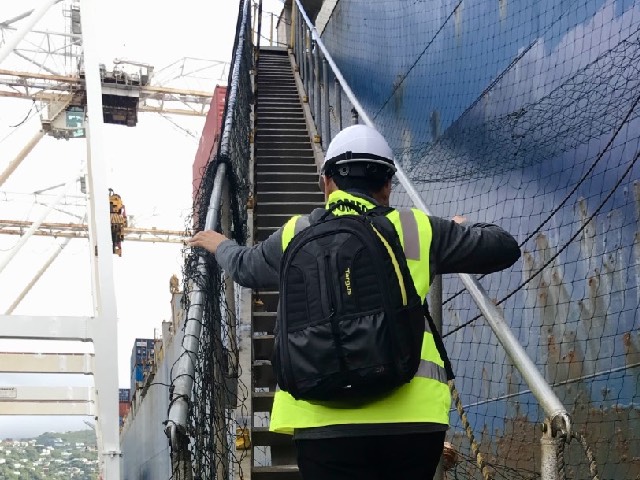Maritime New Zealand has designated seafarer welfare representatives as ‘essential workers’ and provided clear advice for port welfare service providers in terms of their role, available support and the access that they can gain to seafarers. Provided to the Seafarer Welfare Board (SWB) of New Zealand the following advice remains extant at the time of writing. Most notably, crews that have been at sea for 14 days are considered to have the same rights as New Zealand citizens.
Ship visiting / shore leave under current Covid-19 restrictions Maritime New Zealand’s latest advice (April 23-30)
The following is the advise the Seafarers Welfare Board for New Zealand has received from Maritime New Zealand regarding ship visiting by our seafarers’ welfare organisations; and about shore leave for seafarers. This advise was received while NZ was under Alert Level 4 and 3 and appears to apply to both these Covid-19 alert levels. At the time of reporting, New Zealand has entered into Alert Level 2 as at 11.59pm on Wednesday 13 May and remains so.
Ship Visiting
• Seafarer welfare representatives would be considered “essential workers” under the guidelines set out by the Ministry of Transport
• Seafarer welfare representatives are permitted by the ports to enter the port area and access the vessels in ports where there is a representative
• The importance of seafarer welfare is paramount, particularly during this period of lockdown. As such, it is vital that they are provided with the correct care and attention from our ports.
• Under Level 4 some ports were not providing transport services for seafarer welfare services from the gate to the ship. Under Level 3 it is requested that such transport services be provided, with appropriate PPE and distancing measures as are applied to other transport activities within the Port, noting that seafarer welfare workers are considered as essential workers.
• There is a desire by ports that, if a ship requires wi-fi for the crew, this will be provided. While there is variation on how this is delivered, the intent is that it will be available.
Shore leave:
• Once a ship’s crew has completed 14 days from their last overseas port (or crew change at sea if this occurred, and assuming: there is no suspicion of infection on board the ship; the seafarer(s) are not under any specific restriction due to recent overseas travel, or COVID19 cases, or close contact of a case), then seafarers should be treated in the same manner as other New Zealanders – the ship is effectively their “bubble” – they are able to go ashore.
• Typically this might be for walks, or a visit to the supermarket, for example. While ashore they must behave consistently with the restrictions of Alert Level 3.
• The Ministry of Health has offered clarity: What it means is that once the crew have completed 14 days from their last port (or crew change at sea, if this occurred) then the restrictions will be whatever are currently in place for New Zealand, currently Alert Level 4 but changing to Alert Level 3 on Monday night. So yes, if the marine crew(s) are not under any specific restriction due to recent overseas travel, or COVID19 cases, or close contact of a case, then they are able to go ashore within the restrictions of Level 4, and in the future Level 3.
Sustainability of Port Welfare Services
Meantime, concerns raised through the SWB to HRAS which resulted in the publishing on 16 April 2020 of an independent report and case study into the precarious state of the sustainability of welfare support for seafarers visiting New Zealand ports titled: “New Zealand: Under-Funding of Seafarers’ Welfare Services and Poor MLC Compliance” continues to gain attention and traction in New Zealand to assist in bringing about assured long-term sustainability to essential welfare services for seafarers visiting the State.
Source: Human Rights at Sea









































